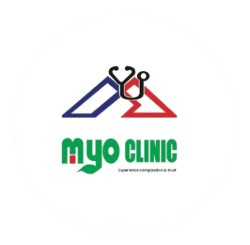Lung cancer stands as a leading cause of cancer-related deaths worldwide. Its impact is vast and often devastating. However, recognizing lung cancer symptoms early can lead to better health outcomes. Spotting signs before it progresses is crucial, as it allows for timely medical intervention. Knowing what to look for can be lifesaving, emphasizing the need for awareness and education. Let’s delve into understanding the lung cancer symptoms that could prompt an early diagnosis and provide a chance for a better prognosis.
Understanding the Importance of Early Detection
Catching lung cancer in its initial stages increases the chances of successful treatment. The challenge lies in the fact that severe lung cancer symptoms often don’t appear until the disease is advanced. This lack of early symptoms makes detection difficult. However, statistics highlight a positive outlook when cancer is diagnosed early. Survival rates significantly improve when lung cancer is caught at an early stage. Early detection often means more treatment options and a higher rate of successful outcomes. Despite the absence of severe early lung cancer symptoms, staying informed and vigilant remains vital.
Recognizing the Common Early Signs of Lung Cancer
Identifying lung cancer symptoms in the early stages can be challenging but not impossible. Here are some common signs to be wary of: – Persistent Cough: A cough that doesn’t go away or worsens is a red flag. – Coughing Up Blood: Even a small amount could indicate bigger issues. – Shortness of Breath: This might happen suddenly and during routine activities. – Chest Pain: It can occur when you breathe deeply, laugh, or cough.
These symptoms can often mimic other illnesses, leading to delays in seeking help. Nonetheless, if these symptoms persist or worsen, it’s vital to consult a doctor to rule out serious issues. Early diagnosis remains the best defense in fighting this illness.
Identifying Additional Warning Signs
Beyond the common lung cancer symptoms, there are additional signs worth noting: – Unexplained Fatigue: Feeling unusually tired even with adequate rest. – Unintentional Weight Loss: Losing weight without trying could be a warning sign. – Voice Changes: Hoarseness might develop and persist.
Other peculiar signs include recurrent infections like bronchitis or pneumonia and pain in the shoulder or back. Each of these could pinpoint something isn’t right with breathing or where it originates. Stay alert to these signs to help detect potential problems sooner.
Overlooked and Rare Symptoms
Not all lung cancer symptoms are commonly recognized: – Facial Swelling: This can occur if a tumor presses against certain veins. – Finger Clubbing: Changes in the shape or size of fingers might not raise alarms but can be significant. – Swallowing Difficulties: This could suggest a growing tumor impacting swallowing functions.
As cancer spreads, these rare symptoms become more evident, complicating the disease further. They’re often overlooked or misattributed to less severe causes. It’s important to get unusual signs checked for possible implications of cancer.
Barriers to Recognizing Lung Cancer Symptoms
Ignoring or missing lung cancer symptoms is common for several reasons. Many attribute symptoms to aging or conditions like asthma or allergies, which leads to ignoring them. Some avoid seeing a doctor out of fear of being judged for smoking habits. There is a stigma attached to the disease, often associated with smoking even though non-smokers can get it, too. These barriers delay seeking help, worsening potential outcomes. Breaking these stigmas ensures timely medical evaluations.
Assessing Your Risk Factors
Understanding causes for lung cancer can help in measuring potential risks. Smoking stands as the top risk factor. Others include exposure to secondhand smoke, pollutants like asbestos or radon, and a family history of the disease. Those at higher risk should explore available screening programs. Recommended screenings, like low-dose CT scans for high-risk groups, lead to early detection and treatment, improving survival chances significantly. Awareness of these factors helps people take proactive measures towards health and safety.
When to Seek Medical Advice
Don’t hesitate to seek a doctor for persistent lung cancer symptoms. Symptoms like a chronic cough, unexplained weight loss, or ongoing chest pain warrant medical advice. Overcoming fears or stigmas related to diagnosis can lead to early detection and potentially lifesaving interventions. Being proactive about health by discussing concerns with a healthcare provider, regardless of perceived risks, is crucial. Taking the first step can make a significant difference in health outcomes.
Checklist: Symptoms to Watch For
Keep this quick checklist handy for potential lung cancer symptoms: – Persistent cough – Coughing up blood – Shortness of breath – Unexplained weight loss – Chest or shoulder pain
Recognizing these signs early and taking action can help in mitigating severe outcomes. Personal health awareness and swift response to persistent symptoms can contribute to timely treatment and better results.
Conclusion: The Power of Awareness
The significance of timely medical attention and routine check-ups cannot be overstated. Early treatment interventions provide better chances of survival and outcomes. Keeping informed about the potential causes for lung cancer and the symptoms can lead to a quicker path to needed medical care. Awareness empowers individuals to take necessary steps in monitoring their health and seeking help when symptoms start. Recognizing and acting on early signs is vital in improving life expectancy and health quality in the face of this serious disease.
Trust Myo Clinic for timely diagnosis and expert treatment—take charge of your health today and get the care you deserve. Contact Myo Clinic now!



